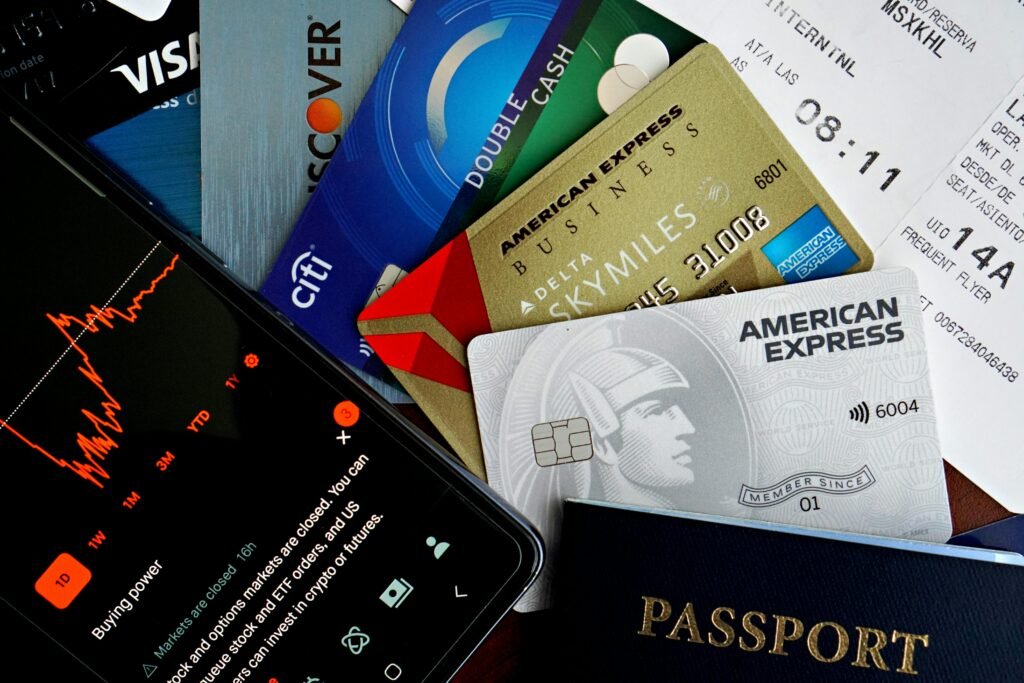
📊 Tracking Rewards Value: A Key to Smarter Spending
Credit card rewards can be a powerful financial tool—but only when the value you extract from them exceeds the cost of earning them. Without clear tracking and intentional evaluation, it’s easy to fall into the trap of overspending in the name of “maximizing rewards.” What begins as a strategic approach often morphs into unnecessary purchases, inflated balances, and financial stress.
To truly benefit from rewards programs, cardholders need more than just a good credit card—they need clarity. This means knowing how much a point is worth, when and how to redeem them, and how to ensure that earning those rewards doesn’t come at a higher cost. When reward chasing becomes a justification for poor financial behavior, the entire system backfires.
🎯 Why Tracking Matters More Than Earning
The first rule of maximizing rewards value is understanding that earning points is only half the equation. If you don’t track how much those rewards are worth or what you sacrificed to earn them, you might spend $500 just to receive $25 in benefits—a poor return by any standard.
Tracking your reward performance empowers you to spend smarter. It exposes inefficient habits, encourages intentional use of your cards, and reinforces the idea that financial tools should serve your goals—not drive them.
💡 Define Your Rewards Goals Early
Before diving into spreadsheets or apps, it’s essential to understand why you’re pursuing rewards in the first place. Are you aiming for free travel, cashback, gift cards, or statement credits? Each reward type has a different value proposition, and not all cards serve the same purpose.
When you define your objective early, you eliminate distractions. Instead of chasing every sign-up bonus or rotating category, you can focus on what genuinely enhances your life.
📌 Examples of Reward Goals
- Book two roundtrip flights to Europe by next summer
- Earn $500 cashback for holiday shopping
- Cover hotel stays during quarterly business trips
- Offset grocery expenses using points monthly
Clear goals transform abstract points into tangible value and provide motivation to track progress responsibly.
🧮 Calculate the Real Value of Your Rewards
One of the most critical habits in managing credit card rewards is calculating the dollar value of each redemption. Many users see large point balances and assume they hold high value, but in truth, redemption rates can vary drastically—from $0.005 to $0.02 per point.
🔍 How to Determine Value Per Point
Use this simple formula:
Point Value = (Redemption Value in Dollars) ÷ (Number of Points Used)
Example: If you redeem 20,000 points for a $200 hotel stay, each point is worth $0.01. This is generally considered a good redemption. Anything below that may not be worth it, especially if you had to overspend to earn those points.
🧾 Create a Rewards Tracking System
Once you know your goals and understand redemption values, it’s time to build a system. Tracking doesn’t have to be complicated. A basic spreadsheet or app can help you maintain control of multiple cards, balances, and reward structures.
📋 Sample Tracking Table
| Card Name | Points Balance | Reward Type | Est. Value | Redemption Goal |
|---|---|---|---|---|
| Chase Sapphire | 85,000 | Travel | $850 | Flight to Japan |
| Amex Gold | 50,000 | Dining | $500 | Food tour experience |
| Citi Double Cash | Cashback | $200 | $200 | Emergency fund |
Updating this tracker monthly will reveal whether your spending habits are producing real value—or just the illusion of benefit.
🧠 Avoid Emotional Spending for Points
Many people overestimate the value of points and underestimate the cost of earning them. It’s easy to say “It’s worth it—I’ll get 5x points,” but if that purchase wasn’t necessary, the real cost is far higher than the reward. Emotional spending distorts logic and turns a disciplined tool into a liability.
Building awareness around these behaviors is essential. Track not only how much you spend, but why you spent it. Did you buy something extra to meet a bonus? Were you influenced by a limited-time promotion?
🧘 Reflection Questions for Every Purchase
- Was this purchase already in my budget?
- Would I buy this if no points were involved?
- How much am I really earning from this transaction?
- Will this reward actually support my financial goals?
These small questions create a massive shift in mindset—keeping you in control of your money, not the other way around.
📉 Watch Out for Diminishing Returns
Credit card companies are experts at using variable reward structures to influence behavior. Limited-time offers, rotating bonus categories, or double points events can tempt you into spending outside your norm. But once the initial excitement fades, you may realize that the cost outweighed the reward.
Instead of chasing marginal bonuses, focus on consistent value. A flat-rate 2% cashback card often delivers more long-term value than a flashy points program with restrictions and expiration risks.
📌 Track Cost-to-Reward Ratios
Each time you redeem rewards, calculate the ratio of dollars spent to reward earned. If you had to spend $5,000 to earn a $150 bonus, your effective rate was 3%. But if you only needed to spend $2,000 to earn $100, your effective rate improved dramatically. Use this as a benchmark for future decisions.
🧭 Align Rewards With Core Financial Values
Tracking is not just about numbers—it’s about alignment. The rewards you earn should support your bigger financial picture: saving for travel, building emergency funds, enjoying guilt-free treats, or increasing generosity. When your rewards align with values, they deliver far more satisfaction and peace of mind.
As highlighted in this in-depth guide to maximizing card rewards, clear goals and consistent tracking lead to sustainable value. You don’t need to game the system—you just need to stay intentional within it.
🛠️ Keep It Simple to Stay Consistent
You don’t need five cards and a complex spreadsheet. Often, two or three well-chosen cards paired with clear goals and simple tracking can outperform more elaborate systems. Simplicity creates sustainability—and that’s where real long-term reward lies.

🧠 Behavioral Insights to Protect Your Rewards Strategy
Earning reward points is one thing—keeping them sane and valuable is another. Behavioral biases can chip away at your financial discipline and lead to overspending disguised as smart reward collection. To truly track value and avoid unnecessary expenses, awareness of these cognitive traps is essential.
Impulse purchases, emotional rationalizations, or “travel bragging rights” often justify spending that doesn’t align with your financial plan. Recognizing these tendencies allows you to course-correct before consequences arise.
🔍 Common Pitfalls in Rewards Management
These are some psychological triggers that distort spending habits:
- Anchoring bias: The crossed‑out price looks so good, you convince yourself you need that item.
- FOMO: Limited-time offers or exclusive deals push you to spend even if it’s unnecessary.
- Emotional justification: “I worked hard—so I deserve this splurge!”
Counter these by setting cooling-off periods and pausing before unplanned purchases—even those that promise extra points.
📉 Avoid the Most Common Card Mistakes
Even experienced cardholders often make choices that reduce net reward value. From neglecting fees to ignoring expiration rules, these errors can consume the benefits you thought you earned.
Insightful guidance on avoiding these pitfalls is offered in 10 Common Credit Card Mistakes and How to Avoid Them, which details how to avoid overspending traps, hidden fees, and misuse of rewards structures.
✅ Mistakes to Watch For
- Paying interest instead of focusing on paying balances in full
- Missing redemption deadlines or points expiration
- Chasing bonus categories without a clear spending plan
- Overpaying annual fees that outweigh net benefits
Tracking helps you identify and correct these mistakes before they erode your earnings.
📊 Use Data to Drive Reward Decisions
A robust tracking system gives you insight into the real performance of your rewards and cards. Use it to compare the effective reward rate across spending categories, redemption methods, and card choices.
📅 Quarterly Review Table
| Card | Total Spent | Total Points | Reward Value | Reward Rate (%) |
|---|---|---|---|---|
| Chase Sapphire | $4,000 | 40,000 | $400 | 10% |
| Amex Gold | $3,000 | 30,000 | $300 | 10% |
| Citi Double Cash | $5,000 | N/A | $100 | 2% |
Such metrics help you see which cards actually profit you—and which ones are dragging down your effective rate.
🛠️ Automate Tracking & Notifications
Manual tracking works, but automation reduces friction. Use budgeting apps or phone alerts to track statement totals, upcoming reward expirations, and bonus category activations.
🔔 Set Smart Alerts
Configure notifications for:
- Expiring points or miles
- End of rotating bonus periods
- Unusual spending spikes in categories
- New redemption promotions
These reminders help you act promptly and avoid losing earned value.
💬 Strategy Shifts: When Life Changes, Cards Should Too
Your reward tracking system should adapt as your spending and lifestyle shift. A card that once made sense for travel may no longer be ideal if your travel habits change, or if bonus categories shift.
A clear tracking system reveals when your setup no longer aligns—and helps you make evidence-backed decisions about switching or consolidating cards.
🔄 Biannual Strategy Evaluation
Every six months, ask yourself:
- Am I using each card enough to justify any fees?
- Are my current cards aligned with my top spending categories?
- Is there a better-value card that fits my evolving needs?
- Should I close or downgrade cards with low return?
This regular check-in ensures ongoing optimization without habit creep or overwhelm.
💰 Optimize Redemption Methods for Maximum Value
Redeeming points wisely is as important as earning them efficiently. Different cards and programs offer different redemption values based on travel partner transfers, flexible booking sites, or fixed redemption schemes.
🎖️ High vs. Low Value Redemption Paths
- Transfer points to airline/hotel partners for high-value travel bookings
- Use statement credits or cashback for flexible and predictable value
- Avoid fixed-value gift card conversions that may undercut redemption rate
If you’re planning a redemption soon, align it with a goal—whether it’s travel, business, or lifestyle enhancement—to ensure purpose, not impulse, guides your decision.
✨ Stay Emotionally Connected to Financial Goals
Numbers are valuable, but emotional connection makes your systems sustainable. When you track progress toward meaningful rewards—trip booked, family reunion paid for, financial treats that matter—you reinforce the value of disciplined behavior.
That emotional tie becomes a powerful motivator to track consistently and avoid the pitfalls of balance creep or impulsive spending.
🧭 Emotional Anchor Technique
Create a visual or written anchor linked to your rewards goal—maybe a photo of your destination, or a reminder of the purpose behind your spending strategy. Refer to it monthly to keep intention clear and reward tracking purposeful.

🧭 Turn Tracking Into a Lifestyle Practice
Tracking your rewards value shouldn’t feel like another chore—it should feel like a key component of your intentional financial lifestyle. When reward points are viewed not just as perks but as strategic tools for progress, every dollar spent becomes more mindful, and every point earned brings you closer to goals that truly matter.
Building this habit starts with consistency. Whether you use a spreadsheet, an app, or a dedicated notebook, the real benefit comes from reflection. Each time you review your activity, you’re not just measuring progress—you’re reinforcing discipline, clarity, and financial confidence.
📅 Monthly Rituals That Keep You Focused
- Update your rewards balances and estimated values
- Match progress to personal or family financial goals
- Identify one behavior to improve for the next month
- Celebrate a win—even a small one—to reinforce the habit
Over time, these rituals not only protect your finances—they elevate them.
🌿 Align Rewards With Life Purpose
One of the most overlooked aspects of rewards optimization is emotional alignment. Why are you earning these points? What will they allow you to experience, express, or create? When your rewards align with purpose, they become more than just numbers—they become meaningful milestones in your financial journey.
Whether it’s treating your partner to a special trip, funding a personal retreat, or supporting someone in need, rewards can carry emotional value when used with intention. This deeper purpose prevents hollow spending and turns tracking into an act of self-respect.
❤️ Purpose-Driven Rewards Framework
- Joy: Use points for memorable experiences
- Freedom: Convert to statement credits for breathing room
- Growth: Redeem for tools, learning, or wellness
- Connection: Gift experiences or support family goals
When rewards become a reflection of your values, every transaction carries intentional weight.
💬 Talk About Rewards With Financial Partners
If you share finances with a partner, tracking rewards together can create alignment, excitement, and accountability. Instead of hiding purchases or chasing points solo, make it a shared process. Review balances together. Plan redemptions jointly. Celebrate wins as a team.
This kind of transparency builds financial intimacy and ensures both people feel heard, respected, and engaged in the process.
👫 Shared Rewards Strategy Session
Set aside time once a quarter to review your rewards portfolio together. Ask:
- Which redemptions brought us the most satisfaction?
- Are we tracking effectively as a couple?
- What shared goal could our rewards support next?
Money is emotional. Sharing the responsibility makes the rewards feel more meaningful.
🪙 Use Rewards to Reinforce Financial Discipline
One of the most effective uses of tracking is to use your rewards as a form of feedback. High reward yields paired with low spending indicate strong financial discipline. Low-value redemptions with high spending may signal overindulgence or inefficiencies in your system.
This feedback loop is powerful. It turns your credit card into a self-awareness tool, helping you reflect on habits, identify weak points, and strengthen your financial identity over time.
📈 Discipline Dashboard Concept
- Track average monthly spend vs. average rewards earned
- Graph value-per-point by card and by category
- Identify which types of purchases drive the highest ROI
- Spot emotional purchases that generate low return
This approach removes guesswork and replaces it with data-driven clarity.
❤️ Conclusion
Tracking rewards value is not just a smart financial move—it’s a mindset shift. It transforms your relationship with credit cards from reactive to proactive, from temptation to empowerment. It ensures every purchase supports the life you’re building, not the marketing you’re reacting to.
When you know where your points are going, what they’re worth, and how they fit into your bigger picture, you move from financial noise to financial focus. You stop chasing more—and start building better. That’s where real reward lives. And it’s not just in your wallet—it’s in your peace of mind.
❓ FAQ
Q: How often should I track my credit card rewards?
Monthly tracking is ideal. It gives you enough time to see progress without becoming overwhelmed. Use that time to review balances, value-per-point, and upcoming opportunities for redemption or bonus categories.
Q: What’s the easiest way to track points across multiple cards?
Use a simple spreadsheet or a secure rewards tracking app. List each card, current point balance, estimated value, and goal. Automate updates where possible and set monthly reminders to stay consistent.
Q: Is it better to redeem points for travel, cashback, or gift cards?
It depends on your goals. Travel often gives the highest redemption value, but cashback is flexible and safe. Gift cards are usually fixed-value but can be useful if they align with planned purchases. Track which options bring you the best ROI and satisfaction.
Q: How can I avoid emotional spending while earning rewards?
Only use your card for purchases already planned in your budget. Pause before each nonessential transaction and ask if it supports your goals. Tracking emotional spending separately helps you build awareness and reduce impulsive habits over time.
This content is for informational and educational purposes only. It does not constitute investment advice or a recommendation of any kind.
Learn to manage wealth with discipline while enjoying luxury by design here:
